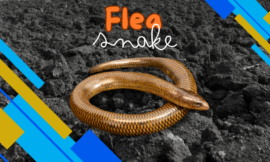Piercing trends come and go, but the snake bites piercing has maintained its popularity due to its edgy and bold look. If you’re considering getting this lip piercing, it’s essential to know the ins and outs before taking the plunge. In this article, we will share 5 key facts about snake bites piercing that will help you make an informed decision about this unique body modification.
What Is Snake Bites Piercing? Everything You Need to Know
The snake bites piercing is a type of lip piercing that consists of two separate piercings placed symmetrically on either side of the lower lip. The name comes from the placement of the piercings, which resemble the bite marks of a snake. This piercing is popular among those who want a bold and alternative look, as it gives off a fierce, edgy vibe.
Why Is It Called Snake Bites?
The term “snake bites” refers to the two piercings being placed on opposite sides of the lower lip, mimicking the fangs of a snake. This distinct arrangement sets the snake bites lip piercing apart from other types of lip piercings, such as labrets or Monroe piercings.
How Much Does Snake Bites Piercing Hurt? A Pain Level Guide
One of the most common questions people ask is, “How much does a snake bites piercing hurt?” Like any piercing, pain levels vary depending on individual tolerance, but there are a few things to keep in mind.
Pain Level
On a scale of 1 to 10, with 10 being the most painful, most people rate snake bites piercing pain at around a 5 or 6. The pain is typically short-lived, as the piercing process only takes a few seconds for each side. However, because this piercing goes through both skin and cartilage in the lip, you may feel more discomfort than with a simple earlobe piercing.
Factors That Affect Pain
- Piercer’s Skill: A highly skilled and experienced piercer can minimize the pain by performing the piercing quickly and accurately.
- Personal Pain Tolerance: If you have a low pain tolerance, you might experience more discomfort than someone with a higher tolerance.
- Aftercare: Proper aftercare can prevent additional pain from swelling, infection, or irritation.
Knowing what to expect in terms of pain can help you prepare mentally and physically for your snake bites piercing.
Snake Bites Piercing Healing Time and Aftercare Tips
Once you’ve gotten your snake bites piercing, the healing process begins. On average, snake bites piercing healing time is between 6 to 8 weeks. However, it’s important to follow proper aftercare guidelines to ensure your piercings heal without complications.
Aftercare Tips for Snake Bites Piercing
- Clean Your Piercings Daily:
Use a saline solution to gently clean your piercings twice a day. This helps to prevent infection and keeps the area free from bacteria. - Avoid Touching or Twisting the Jewelry:
Touching or twisting your piercings can introduce bacteria and slow down the healing process. It’s best to leave them alone as much as possible. - Watch What You Eat:
For the first few days after getting your snake bites piercing, avoid spicy, acidic, or crunchy foods that could irritate the area. Stick to soft foods and drink plenty of water. - Be Careful with Oral Hygiene:
Brush your teeth gently and use alcohol-free mouthwash to keep your mouth clean without irritating the piercings. - Avoid Smoking and Alcohol:
Smoking and alcohol can irritate your piercings and increase the risk of infection. Try to avoid them, especially in the first few weeks of healing.
By following these aftercare tips, you’ll reduce the chances of complications and ensure a smooth healing process for your snake bites piercing.
Choosing the Right Jewelry for Your Snake Bites Piercing
One of the exciting aspects of getting a snake bites piercing is choosing the perfect jewelry to complement your style. There are various types of snake bites piercing jewelry to choose from, including rings, studs, and labrets.
Popular Jewelry Choices for Snake Bites Piercing
- Labret Studs:
Labret studs are a popular choice for snake bites piercings because they sit flat against the skin and are less likely to catch on clothing or other objects. - Hoop Rings:
Hoop rings give a more dramatic look and are often chosen by those who want to emphasize the piercing’s resemblance to snake fangs. - Circular Barbells:
Circular barbells offer a unique and customizable option, allowing you to switch up your look with different bead styles and colors. - Materials:
When choosing snake bites piercing jewelry, opt for high-quality materials like surgical steel, titanium, or 14k gold. These materials are less likely to cause allergic reactions or irritation.
Choosing the right jewelry ensures your snake bites piercing heals well and suits your personal style.
Snake Bites Piercing Cost: What You Need to Know Before You Commit
The cost of a snake bites piercing can vary depending on several factors, including the piercer’s experience, the location of the piercing studio, and the type of jewelry you choose.
Average Cost of Snake Bites Piercing
In general, the snake bites piercing cost ranges from $50 to $100 for both piercings. This price typically includes basic jewelry, but more expensive options like gold or custom designs will increase the total cost.
What Affects the Price?
- Location: Piercing prices can vary depending on where you live. Urban areas and high-end studios may charge more than smaller towns or less well-known shops.
- Jewelry Type: The cost of jewelry can also impact the overall price. Basic surgical steel jewelry is usually included in the price, while gold or titanium will cost extra.
- Experience of the Piercer: A more experienced piercer may charge a higher fee due to their expertise and reputation, but this can be worth the investment for a safer and quicker procedure.
It’s important to consider both the cost of the piercing and the quality of the studio when making your decision.
How to Care for Your Snake Bites Piercing: A Complete Aftercare Guide
Proper aftercare is essential to ensure that your snake bites piercing heals correctly. Here’s a step-by-step aftercare guide to follow:
Daily Cleaning Routine
- Use Saline Solution:
Clean your piercings twice a day with a sterile saline solution. You can either buy a pre-made solution or make your own by mixing ¼ teaspoon of non-iodized sea salt with 8 ounces of warm water. - Avoid Over-Cleaning:
While it’s important to keep your piercing clean, over-cleaning can irritate the skin. Stick to a twice-daily cleaning routine to avoid unnecessary irritation. - Oral Hygiene:
Brush your teeth gently and use an alcohol-free mouthwash to rinse after eating. This keeps your piercings free of food particles and reduces the risk of infection.
Avoid These Common Mistakes
- Touching the Piercing with Unclean Hands:
Always wash your hands before touching your snake bites piercing. Dirty hands can introduce bacteria to the piercing site. - Sleeping on Your Face:
Avoid sleeping on your face or putting pressure on the piercings while they heal. This can cause irritation and delay healing. - Changing Jewelry Too Soon:
It’s tempting to change your jewelry for a different style, but wait until your piercings are fully healed before switching out your jewelry.
By following these aftercare steps, you’ll minimize the risk of infection and ensure your snake bites piercing heals as smoothly as possible.
Common Risks and Complications of Snake Bites Piercing
Like any body modification, snake bites piercings come with certain risks. Knowing these potential complications can help you prevent issues and handle them if they arise.
Possible Risks of Snake Bites Piercing
- Infection:
An infection can occur if the piercing is not cleaned properly or if bacteria is introduced. Signs of infection include redness, swelling, pus, or fever. - Swelling:
Swelling is normal in the first few days after getting your piercing, but if it persists or worsens, it could indicate an issue. - Rejection:
In some cases, the body may reject the piercing, causing the jewelry to move or the skin to push it out. - Scarring:
Improper aftercare or infections can lead to scarring. Following proper aftercare instructions can reduce this risk. - Tooth and Gum Damage:
Incorrectly placed jewelry can rub against your gums or teeth, leading to damage. Be sure to choose jewelry that fits properly and won’t cause long-term issues.
By understanding the risks of snake bites piercing, you can take steps to prevent complications and enjoy a smooth healing process.
For more exciting blogs, visit our homepage Magzineco.
Conclusion: Why Snake Bites Piercing Is a Bold and Unique Style Choice
In conclusion, a snake bites piercing is a bold and fashionable choice for anyone looking to make a statement. With proper aftercare, the piercing can heal beautifully and enhance your unique style. Whether you’re drawn to the edgy look, the variety of jewelry options, or the symbolism behind the piercing, snake bites lip piercings offer a striking and distinctive appearance.
By understanding the pain level, cost, healing time, and aftercare requirements, you can make an informed decision about whether a snake bites piercing is the right choice for you. With the right care and attention, this piercing will allow you to express your personal style and stand out in a crowd.
FAQs About Snake Bites Piercing
- What is a snake bites piercing?
A snake bites piercing is a type of lip piercing where two holes are placed symmetrically on either side of the lower lip, resembling snake fangs. - How painful is a snake bites piercing?
The pain level of a snake bites piercing is usually rated around 5 or 6 out of 10. Pain varies depending on your tolerance, but the discomfort is typically brief. - How long does it take for snake bites piercings to heal?
The healing time for snake bites piercings is generally 6 to 8 weeks, but proper aftercare is crucial to ensure the piercings heal without complications. - Can I eat after getting snake bites piercings?
Yes, but it’s best to stick to soft foods for the first few days to avoid irritating the piercings. Avoid spicy or acidic foods that may cause discomfort. - What are the best materials for snake bites piercing jewelry?
High-quality materials like surgical steel, titanium, and 14k gold are the best options for snake bites piercing jewelry to minimize irritation and allergic reactions. - How much does a snake bites piercing cost?
The cost of a snake bites piercing typically ranges between $50 and $100 for both piercings, depending on the studio and the type of jewelry you choose. - Can snake bites piercings get infected?
Yes, without proper care, snake bites piercings can become infected. Signs of infection include redness, swelling, pus, and fever. - Can I remove my snake bites piercings after they heal?
Once fully healed, you can remove the jewelry temporarily. However, if left out for too long, the piercings may close up. - What should I avoid after getting snake bites piercings?
Avoid touching the piercings with dirty hands, smoking, drinking alcohol, and eating spicy or acidic foods in the days following your piercing. - Do snake bites piercings leave scars?
If properly cared for, snake bites piercings should not leave noticeable scars. However, improper aftercare or infections can result in scarring



